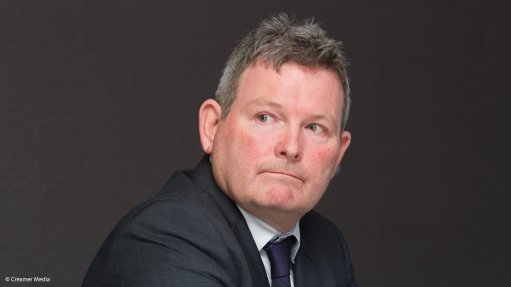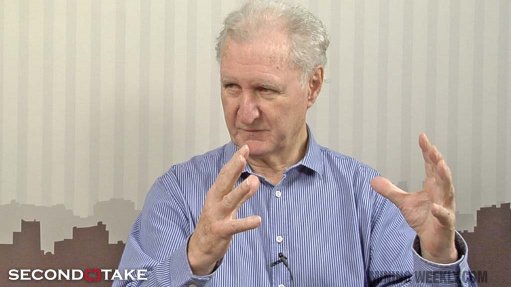Mandela Mining Precinct to produce next gen mining equipment


BRAINSTORMING The Mandela Mining Precinct’s research and development workstreams are tackling challenges pertaining to dilution, narrow seams, and hard rock mining
Photo by Dylan Slater
The Mandela Mining Precinct’s primary objective is to drive research, development and innovation and the investment therein, and it is extremely important, in terms of the local industry’s sustainability, that the next generation of mining equipment is developed by indigenous South African manufacturers, says Department of Trade and Industry (DTI) director Yusuf Timol.
“Conventional mining methods have resulted in resources being deeper, dilution getting higher, and the industry’s productivity and efficiencies diminishing, especially when they are compared with those of our competitors. Our research says that, by the late 2020s, if we continue to use the mining methods we are currently using, gold and platinum resources will be mined out,” states Timol.
He says the country needs to reinvent itself as a mining destination, and that creating and enabling an attractive investment environment is key, which would also involve “exploring unconventional methods of mining”.
Timol stresses that the country must create technologies or solutions that minimise dilution, because that would change the economics of a mining operation. “In order to reduce dilution, we need to be able to mine narrow seams, and mine through harder rock. These challenges provide the precinct’s research and development workstreams with strong direction.”
A Brief History
“The Mandela Mining Precinct originated out of the 2015 Phakisa discussions . . . but prior to those discussions, the DTI had completed research for the Resources Capital Goods Development Programme,” explains Timol, adding that one of the key recommendations of that research was to form a cluster that would be representative of the domestic original-equipment manufacturers (OEMs) that manufacture underground mining equipment.
“Through that research, we recognised that the local mining manufacturers needed to become more organised, so that they could have a common voice. “We at the DTI prefer to talk to groupings rather than individuals or individual companies, with regard to policy, agendas and incentives.”
The Cluster Development Programme (CDP), an incentive programme that aims to promote industrialisation, sustainable economic growth and job creation through cluster development and industrial parks, was subsequently introduced in 2017.
“When we went to the Phakisa, the DTI already had the intention of trying to form a cluster to represent this specific capital goods group of manufacturers, as we had prioritised the mining sector as one where we could once again establish a broader base of industrial capability.”
Timol points out that there are several different clusters, such as the South African Mineral Processing Equipment Cluster (SAMPEC) which falls under the South African Capital Equipment Export Council, and the Mining Equipment Manufacturers of South Africa (MEMSA). The Export Council and MEMSA are cofunded by the DTI and their members.
“The objective of the precinct is to foster collaboration and allow role-players to discover synergies within their manufacturing capacities and to enable mining companies to present challenges to these manufacturers through the precinct’s research and development channels,” says Timol.
As such, the DTI was particularly insistent that mining equipment manufacturers had to be present and contribute to the discourse within the precinct.
The precinct’s other objectives include driving research and industrial development in the mining sector, as well as channelling funding to these goals.
However, before this vision could be realised, the precinct partners needed to continue investing and re-establish the Carlow Road facility as a global Centre of Excellence.
Timol notes that the precinct will establish links between the mining industry that were previously frayed or non-existent while also fostering “healthy competitive behaviour” between mining manufacturers to address the challenges faced by industry, by either competing to develop a better product, or by compartmentalising various aspects of the concept, solution, or product to tackle the challenges through partnerships.
Programmes and Incentives
Timol explains that MEMSA is essentially the pilot for the CDP. He notes that, through the CDP, the DTI has allocated an 80/20 grant to Memsa, “a new commitment that supports and progresses the cluster’s initiatives”.
He adds that some of the MEMSA members have applied for or benefited from other DTI programmes, such as the manufacturing competiveness enhancement programme and the export promotion products, such as trade missions and exhibitions support.
Timol notes that, currently, there is no specific mining capital goods incentive scheme, but that the research report on the Resources Capital Goods Development Programme suggested that such an incentive would be necessary to compete with the foreign OEMs both in South Africa and export markets.
He notes that, in the aftermath of the Phakisa and in the establishment of the precinct, the DTI explored the viability of establishing such an incentive programme, but that the “tough austerity measures” meant that the DTI postponed the drafting of the programme indefinitely.
Timol says the DTI is in the process of sourcing funding for the capital goods incentive programme, and that the department has already drafted a proposal on how such an incentive would work.
Meanwhile, he notes that there are two DTI funded programmes aimed at innovation and product development. The first is the Sector Programme for Industrial Innovation, which is “essentially an incentive for promoting technology development of innovative products of processes”.
The second is the Technology and Human Resources for Industry Programme (THRIP), which sees manufacturers or companies collaborate with an academic institution or science council to collectively develop applied research, design and engineering, and technology development. “The THRIP grant is a 50/50 cost-sharing grant, with a maximum of R8-million a year over three years, across any number of projects.”
Comments
Press Office
Announcements
What's On
Subscribe to improve your user experience...
Option 1 (equivalent of R125 a month):
Receive a weekly copy of Creamer Media's Engineering News & Mining Weekly magazine
(print copy for those in South Africa and e-magazine for those outside of South Africa)
Receive daily email newsletters
Access to full search results
Access archive of magazine back copies
Access to Projects in Progress
Access to ONE Research Report of your choice in PDF format
Option 2 (equivalent of R375 a month):
All benefits from Option 1
PLUS
Access to Creamer Media's Research Channel Africa for ALL Research Reports, in PDF format, on various industrial and mining sectors
including Electricity; Water; Energy Transition; Hydrogen; Roads, Rail and Ports; Coal; Gold; Platinum; Battery Metals; etc.
Already a subscriber?
Forgotten your password?
Receive weekly copy of Creamer Media's Engineering News & Mining Weekly magazine (print copy for those in South Africa and e-magazine for those outside of South Africa)
➕
Recieve daily email newsletters
➕
Access to full search results
➕
Access archive of magazine back copies
➕
Access to Projects in Progress
➕
Access to ONE Research Report of your choice in PDF format
RESEARCH CHANNEL AFRICA
R4500 (equivalent of R375 a month)
SUBSCRIBEAll benefits from Option 1
➕
Access to Creamer Media's Research Channel Africa for ALL Research Reports on various industrial and mining sectors, in PDF format, including on:
Electricity
➕
Water
➕
Energy Transition
➕
Hydrogen
➕
Roads, Rail and Ports
➕
Coal
➕
Gold
➕
Platinum
➕
Battery Metals
➕
etc.
Receive all benefits from Option 1 or Option 2 delivered to numerous people at your company
➕
Multiple User names and Passwords for simultaneous log-ins
➕
Intranet integration access to all in your organisation



















